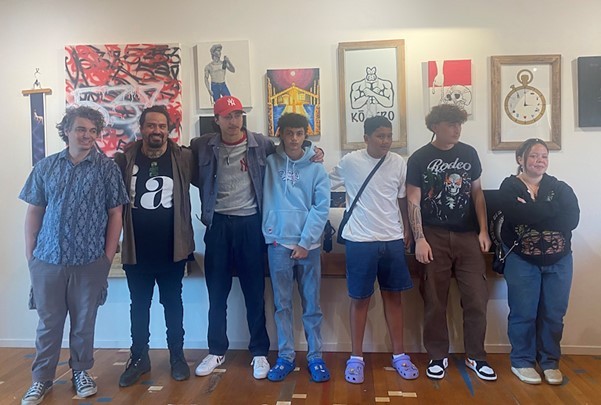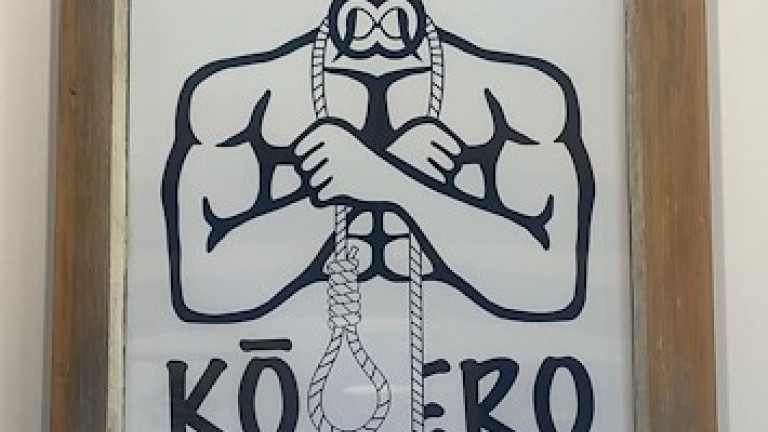A group of rangatahi artists and their friends and whānau came together late last year for the opening of the Hōmai Haumaru exhibition in Ōtaki. The exhibition was the result of months of wānanga and hard work, with a kaupapa focused on giving rangatahi space to express their thoughts and feelings on mental health issues and suicide through creating art.
The kaupapa was created by Hohepa Thompson, better known as Hori, an artist, designer, gallery and café owner and an advocate for te reo me ōna tikanga Māori. Born and raised in Ōtaki, and previously a high school teacher, Hori is well known in the area and is familiar with many of the local rangatahi.
Hori and the rangatahi artists spent time together sharing kōrero on their lives and their hauora, while covering artistic techniques and preparing works for the exhibition, discussing how to best express what they were feeling through their art.
“Art is such an important tool to tell a story”, says Hori. “Especially for the tough guys, it’s a way for them to be vulnerable and really express how they are feeling”.
A number of other artists and speakers came to kōrero with the rangatahi during their wānanga, including Pera Barrett, Xoë Hall, Miriama Grace-Smith, Tāme Iti, and Kereama Taepa.
These well-known creatives gave the kaupapa a broader focus, bringing different artistic mediums and discussions to the table.
At the exhibition, the ragatahi had the option to speak about their work if they felt comfortable doing so. A number of them took on this wero, surprising their whānau with open and upfront kōrero on these difficult issues, which can often be accompanied by a sense of whakamā.
“It’s all about normalising this kind of kōrero,” says Hori. “Sometimes you are going to have a bad day or a bad week, it’s about having the tools to be able to deal with that”.
Lia Forrest, Te Puni Kōkiri Te Tai Hauāuru Regional Advisor, says that the need for rangatahi programmes in the area was evident.
A regional engagement tour highlighted "that rangatahi in the area basically had nothing to do”, Lia says.
“Boredom can be deadly” adds Hori.
In the future Hori is keen to expand Hōmai Haumaru, opening it up to more rangatahi across Aotearoa and widening the scope of the programme, using other mediums for rangatahi to express themselves such as music and dance.
Following the exhibition in the Otaki Gallery, the artwork is going to be part of an exhibition in Toi Matarau, the Māoriland Hub Art Gallery. The individual works are then planned to be auctioned, with funds raised going to Gumboot Friday.
“Art is enduring,” says Lia. “It tells a story and the story remains, so it keeps living.”
“The stories told by these rangatahi will live through their art.”
This story is courtesy of TPK. who supported the initiative through their Rangatahi Manawaroa Fund. Lead image: Hori and the group of rangatahi artists standing in front of their work at the Hōmai Haumaru exhibition opening.

